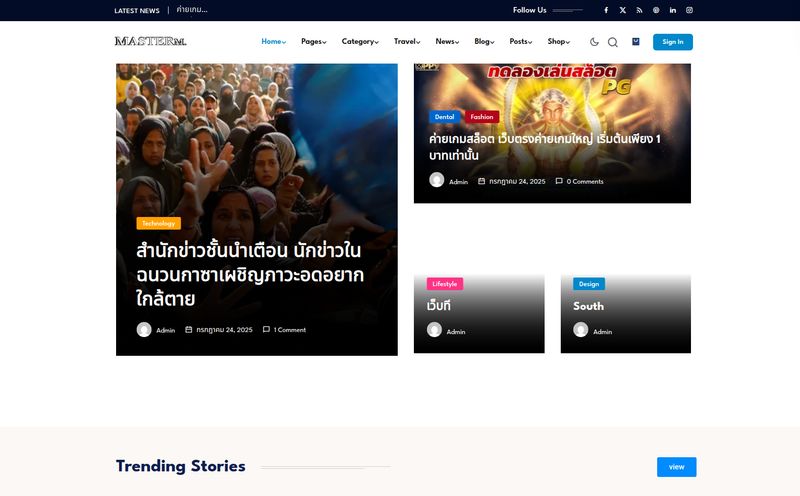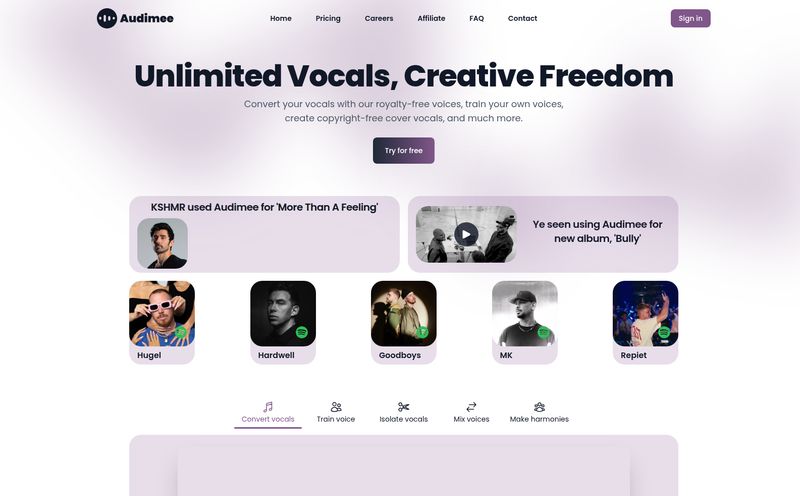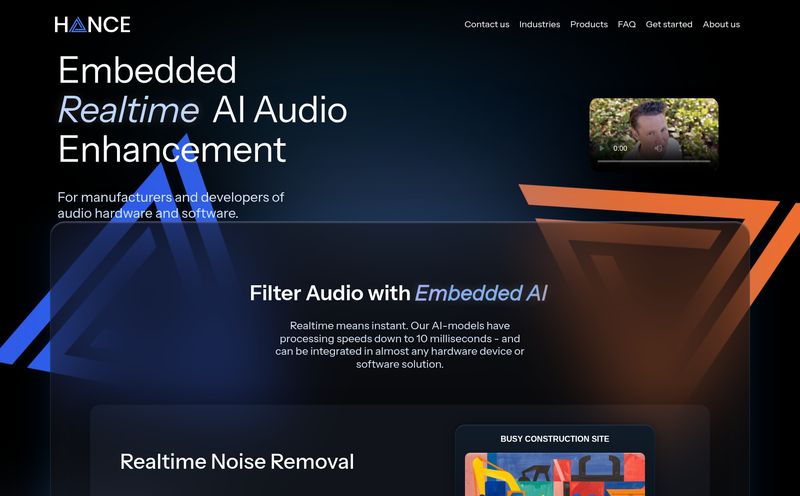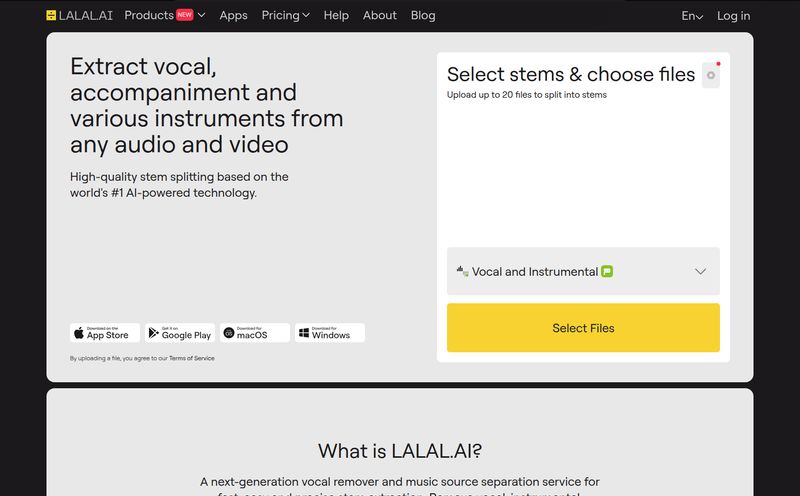Okay, let’s talk. For years, I’ve been that person hunched over my speakers, trying to pick out a tricky bass line from a muddy mix. Rewind, play, rewind, play. You know the drill. You try those sketchy online vocal removers and get something that sounds like a ghost singing in a tin can. It’s a struggle every musician knows all too well. We’ve wanted a tool that could just… unscramble the song. Like taking a cake and neatly separating it back into flour, eggs, and sugar. Impossible, right?
Well, maybe not. I’ve been playing around with an app that comes pretty darn close, and honestly, it’s kind of blown my mind. It’s called Moises, and it’s not just another piece of software. It feels more like a music partner.
So, What Exactly is This Moises Thing?
At its heart, Moises is an AI-powered app that does one thing that feels like pure magic: it separates songs into their individual tracks. We’re talking vocals, drums, bass, guitar, keys—all split into clean, individual stems. You can upload an audio file or even just paste a YouTube link, and its cloud-based brain, which is powered by some seriously smart tech from Deezer, gets to work.
Think of it as a prism for audio. You feed in a single beam of white light (the full song), and it spits out a rainbow of individual colors (the separate instruments). For anyone who creates, learns, or teaches music, the implications are huge. This isn't just a simple vocal remover; it's a full-on deconstruction toolkit.
The Features That Actually Change the Game
An app can have a million features, but only a few usually matter in the day-to-day grind. With Moises, the core tools are all killers, no filler.
AI Audio Separation: The Stem-Splitting Sorcery
This is the main event. The reason we're all here. The AI track separation is shockingly good. I threw a few dense tracks at it—some classic rock, some modern pop with a zillion synth layers—and it handled them with impressive precision. Being able to solo the bass track to nail a groove or mute the guitar to play along is just… transformative. It makes creating backing tracks for practice an absolute breeze. No more searching for low-quality karaoke versions on YouTube!
Practice Tools on Steroids: The Smart Metronome and Speed Changer
Ever tried to learn a blistering guitar solo and wished you could just slow it down without making the guitarist sound like they're melting? Moises’s Audio Speed Changer does just that. You can slow a section down to a crawl to get the fingering right, and it still sounds clean. But the Smart Metronome is the real hidden gem. It generates a click track that syncs perfectly with the song, even if the original recording had some slight timing fluctuations. It's a subtle thing, but for serious practice, it's invaluable.
Finding Your Key and Bending It to Your Will
The Pitch Changer & AI Key Detection is another lifesaver. The app automatically detects the song’s key, which is a great starting point. But the real power is being able to shift that key up or down with a click. If you’re a singer, this is amazing. You can instantly transpose a song to fit your vocal range. No more straining for high notes or sounding like a grumbling bear on the low ones. For guitarists, it means you can adjust a song to an open tuning or avoid using a capo if you don't want to.
Real-Time Chord Detection? This Feels Like Cheating
I remember spending hours searching for reliable guitar tabs online, only to find that most of them were written by someone who'd clearly never held a guitar. Moises’s Chord Detection displays the chords in real-time as the song plays. Is it 100% perfect on every weird jazz chord? No, but for the vast majority of pop, rock, and folk music, it's incredibly accurate. It’s a fantastic tool for quickly jamming on a new song or figuring out the basic structure in seconds.
My Real-World Test Drive with Moises
I decided to put Moises through its paces with a personal demon: the bassline from “Hysteria” by Muse. It's fast, it's relentless, and it’s buried under a wall of guitars and synths. I ripped the track from YouTube, uploaded it to Moises, and waited a couple of minutes for the AI to do its thing.
When I got the stems back, I soloed the bass. And there it was. Crystal clear. I could hear every single note, every little slide and nuance. I slowed the track down to 75% speed and started practicing along. It was a revelation. The separation wasn't flawless—there was a tiny bit of hi-hat bleed in the bass track, that classic 'swishy' sound AI can sometimes produce—but it was 95% of the way there, and infinitely better than anything I could have achieved with an EQ.
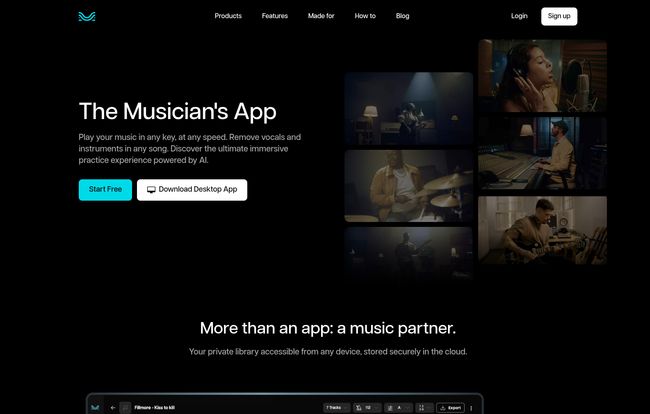
Visit Moises
It’s no wonder guys like Jordan Rudess from Dream Theater and Billy Sheehan are endorsing it. When musicians of that caliber put their name to something, you pay attention. It’s not just for us mortals; it’s a tool that pros find genuinely useful.
The Fine Print: Cost and Availability
So what’s the catch? Well, it's a freemium model. There’s a free version that lets you get a feel for the app, but it has limitations on the number of uploads per month and the features you can access. To really make this a core part of your workflow, you'll probably want to spring for one of the premium plans. They haven't plastered the pricing everywhere, but you can find it on their site or in the app. Considering the power it packs, I'd say it's a justifiable expense for any serious musician.
The great news is that it’s available pretty much everywhere. There’s a web version, a desktop app for both Mac and Windows, and of course, mobile apps for iOS and Android. Your library syncs across all your devices, which is a nice touch.
Is It All Sunshine and Rainbows?
Let's be real, no tool is perfect. First, you need an internet connection. All the heavy AI processing happens in the cloud, so you can’t use it on a plane or in a subway tunnel. Second, as I mentioned, the AI isn’t infallible. On super complex or lo-fi recordings, you might get some audio artifacts. It’s technology, not magic… although it sometimes feels close. And of course, the free version is designed to make you want the paid version. That's just business.
Frequently Asked Questions About Moises
- How accurate is the AI track separation in Moises?
- It's surprisingly accurate for most modern music. On clean, well-produced tracks, it's fantastic. On older, muddier, or more experimental recordings, you might notice some minor 'bleeding' between stems, but it's still one of the best separation tools I've ever used.
- Can I use Moises for commercial projects?
- This is a tricky one. Using the separated stems to create backing tracks for your own live performance or practice is generally fine. But using them to create a remix you plan to sell is a copyright minefield. You're still using someone else's copyrighted material. Always check the terms of service and be smart about copyright law.
- Does Moises work with any song?
- Pretty much! You can upload most common audio files (MP3, WAV, etc.) or just provide a public URL from YouTube or another source. The quality of the source file will impact the quality of the separation, so garbage in, garbage out.
- What are the main differences between the free and paid versions?
- Typically, the free version limits the number of songs you can process per month, the length of the songs, and might not offer the highest-quality downloads or advanced features like separating more than 4 stems. The premium version removes these restrictions for a monthly or annual fee.
- Is Moises difficult for a beginner to use?
- Not at all. The interface is incredibly intuitive. You basically upload a song, wait a bit, and then you're presented with simple sliders to control the volume of each instrument. It's designed for musicians, not sound engineers, and it shows.
- Can I upload a video from YouTube directly?
- Yes, you can. Instead of uploading a file, you just paste the YouTube URL, and Moises will extract the audio for processing. This is probably my most used feature.
The Final Verdict
Look, technology in music can sometimes feel like a gimmick. But Moises isn't that. It’s a genuinely useful tool that solves a real problem musicians have had for decades. It democratizes the process of deconstruction, giving everyone from a beginner guitarist to a professional producer the power to peek inside a mix.
It has completely changed how I approach learning new songs and creating practice materials. It saves time, it boosts understanding, and honestly, it’s just plain fun to play with. If you're a musician in any capacity, you owe it to yourself to at least try the free version. It might just become your new favorite music partner, too.
